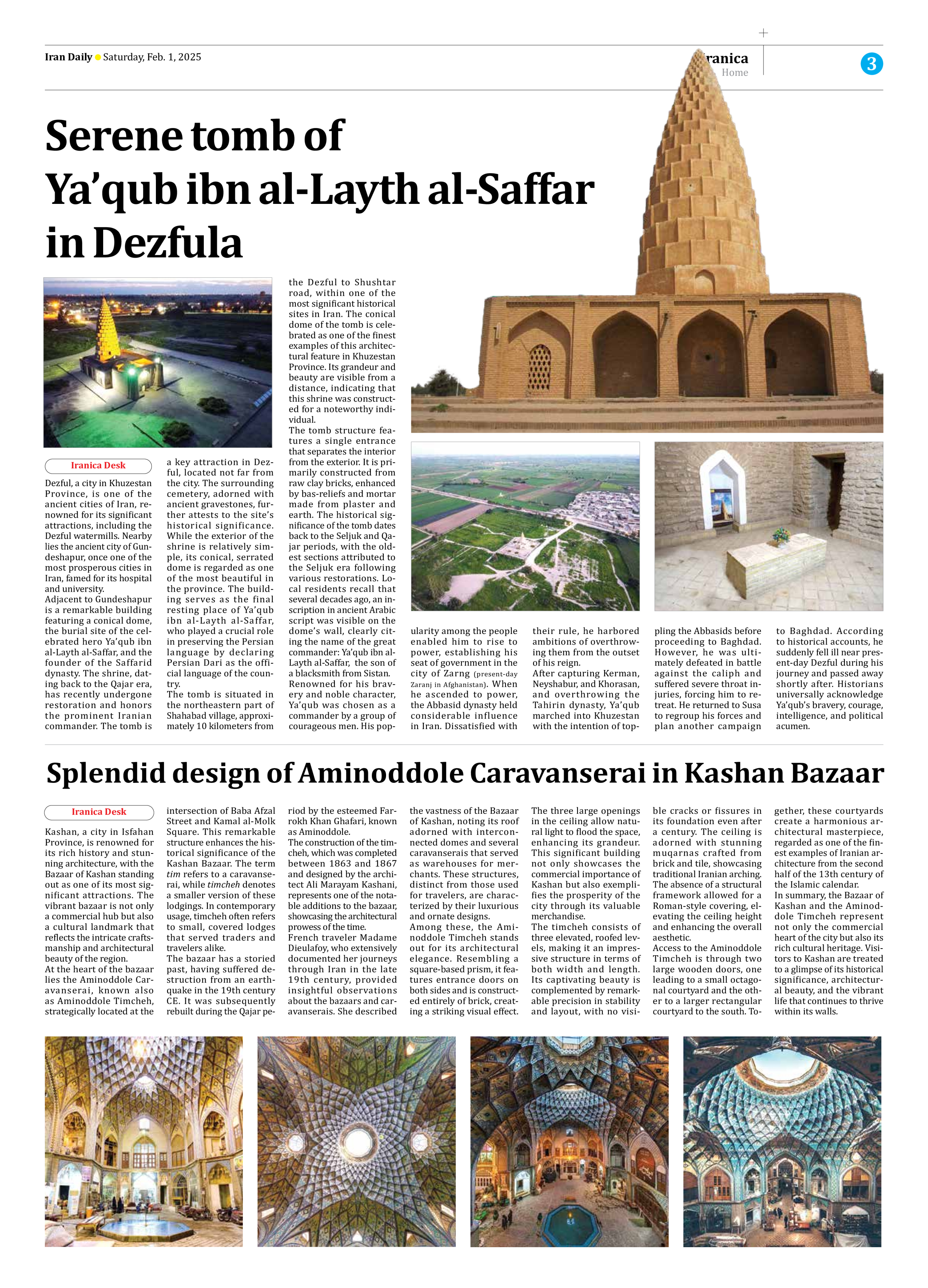
Serene tomb of Ya’qub ibn al-Layth al-Saffar in Dezfula
Dezful, a city in Khuzestan Province, is one of the ancient cities of Iran, renowned for its significant attractions, including the Dezful watermills. Nearby lies the ancient city of Gundeshapur, once one of the most prosperous cities in Iran, famed for its hospital and university.
Adjacent to Gundeshapur is a remarkable building featuring a conical dome, the burial site of the celebrated hero Ya’qub ibn al-Layth al-Saffar, and the founder of the Saffarid dynasty. The shrine, dating back to the Qajar era, has recently undergone restoration and honors the prominent Iranian commander. The tomb is a key attraction in Dezful, located not far from the city. The surrounding cemetery, adorned with ancient gravestones, further attests to the site’s historical significance. While the exterior of the shrine is relatively simple, its conical, serrated dome is regarded as one of the most beautiful in the province. The building serves as the final resting place of Ya’qub ibn al-Layth al-Saffar, who played a crucial role in preserving the Persian language by declaring Persian Dari as the official language of the country.
The tomb is situated in the northeastern part of Shahabad village, approximately 10 kilometers from the Dezful to Shushtar road, within one of the most significant historical sites in Iran. The conical dome of the tomb is celebrated as one of the finest examples of this architectural feature in Khuzestan Province. Its grandeur and beauty are visible from a distance, indicating that this shrine was constructed for a noteworthy individual.
The tomb structure features a single entrance that separates the interior from the exterior. It is primarily constructed from raw clay bricks, enhanced by bas-reliefs and mortar made from plaster and earth. The historical significance of the tomb dates back to the Seljuk and Qajar periods, with the oldest sections attributed to the Seljuk era following various restorations. Local residents recall that several decades ago, an inscription in ancient Arabic script was visible on the dome’s wall, clearly citing the name of the great commander: Ya’qub ibn al-Layth al-Saffar, the son of a blacksmith from Sistan.
Renowned for his bravery and noble character, Ya’qub was chosen as a commander by a group of courageous men. His popularity among the people enabled him to rise to power, establishing his seat of government in the city of Zarng (present-day Zaranj in Afghanistan). When he ascended to power, the Abbasid dynasty held considerable influence in Iran. Dissatisfied with their rule, he harbored ambitions of overthrowing them from the outset of his reign.
After capturing Kerman, Neyshabur, and Khorasan, and overthrowing the Tahirin dynasty, Ya’qub marched into Khuzestan with the intention of toppling the Abbasids before proceeding to Baghdad. However, he was ultimately defeated in battle against the caliph and suffered severe throat injuries, forcing him to retreat. He returned to Susa to regroup his forces and plan another campaign to Baghdad. According to historical accounts, he suddenly fell ill near present-day Dezful during his journey and passed away shortly after. Historians universally acknowledge Ya’qub’s bravery, courage, intelligence, and political acumen.







